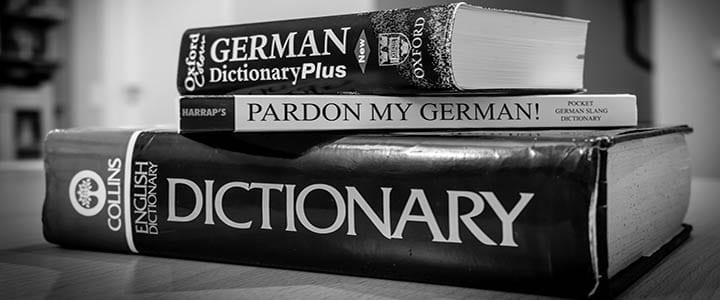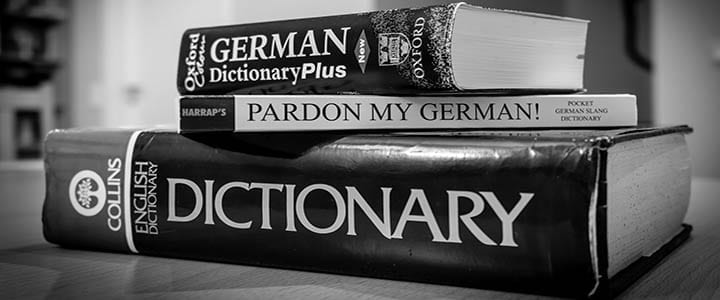German grammar can be a difficult thing to master, especially for beginner students. Here, German instructor Kerstin R. shares some simple tips and tricks on learning German definite articles…
In German, there are 3 genders for nouns: masculine, feminine, and neuter. Each gender has a different definite article that you must use when you’re talking about a specific noun.
For example, the word for “the man” is der Mann, so the definite article here is der. It seems easy enough, but it gets complicated when you have to choose between the different forms of the definite articles.
In this blog post, we’ll go over when to use the different forms of the definite articles in German. We’ll also give you some helpful tips on how to remember which form to use. By the end of this post, you’ll be a pro at using German definite articles!
What Are the Definite Articles in German?
When you first start learning German, it can be difficult to remember which article to use, but with a little practice it will become second nature. So what is a definite article in German? Let’s take a closer look:
- Remember that der is used for masculine nouns, die for feminine nouns and das for neuter nouns.
- The article changes depending on whether the noun is singular or plural. For example, die Katze (the cat) becomes die Katzen (the cats).
- The article also changes depending on the case of the noun. For example, die Katze is in the nominative case, but if it was the subject of a sentence it would be in the accusative case (die Katze sieht die Maus – The cat sees the mouse).
With a little practice, using the definite articles in German will become second nature. Just remember to pay attention to the gender of the noun, whether it is singular or plural, and which case it is in.
If you want to get better at understanding German definite articles – and other key aspects of the language – the best way to do so is by taking German lessons. You’ll learn this, plus everything you see in the video below (and then some!):
https://www.youtube.com/watch?v=PZvqsyS-mRg
Is There a Rule for Articles in German?
In German, there is no hard and fast rule for whether articles (the, a, an) are used or not. In general, the article is used when the noun is definite (i.e. it has been previously mentioned or is easily identifiable) or when it is accompanied by a definite determiner (e.g. this, that, these, those).
However, there are some cases where the article is not used, even when the noun is definite. For example, with proper names and certain geographical terms, the article is not typically used.
And in some cases, such as with fractions or measurements, the article can be omitted entirely. So while there is no one-size-fits-all rule for using articles in German, with a little practice you’ll soon get a feel for when they’re needed.
German Definite Articles Chart
As a German instructor, I tell all of my students the same thing over and over again: You need to know your definite articles. If you don’t, you’ll be lost and have a challenging time getting your German grammar right.
German definite articles are much more complex than English articles. German has three definite articles: der, die, and das; whereas English has just one definite article, the. What’s more, in German, each of the definite articles has a gender. See below.
Der
- Der is used for masculine nouns.
- Example: der Junge (the boy) and der Ball (the ball)
Die
- Die is used for feminine nouns.
- Example: die Frau (the woman) and die Puppe (the doll)
Das
- Das is used for neuter nouns.
- Example: das Mädchen (the girl) and das Schwein (the pig)
Definite Article in German Types
It’s important to know the definite article of each noun, because the article changes according to the case of the noun. There are four different cases in the German language. See below:
1. Nominative
- The subject of the sentence
- Example: Der student lernt Deutsch. (The student learns German.)
2. Genitive
- The possessive in the sentence
- Example: Das ist die Tasche des Lehrers. (That is the teacher’s bag)
3. Dative
- The indirect object in the sentence
- Example: Ich habe das dem Mann schon gesagt. ( I already told the man that.)
4. Accusative
- The direct object of the sentence
- Example: Ich habe einen Tisch. (I have a table.)
German Definite Article vs. English
The English language has these cases, too (except dative), but here is the big difference: In English, the noun and the definite article do not change depending on its case – but in German they do.
Below are some examples on how the definite articles der, die, and das change into dem, der, dem in the dative case, which is the most difficult, yet vital element of communicating in German.
Der Ball (the ball)
- Der Junge spielt mit dem Ball. (The boy plays with the ball.)
- Die Frau spielt mit dem Ball. (The woman plays with the ball.)
- Das Mädchen spielt mit dem Ball. (The girl plays with the ball.)
Die Puppe (the doll)
- Der Junge spielt mit der Puppe. (The boy plays with the doll.)
- Die Frau spielt mit der Puppe. (The woman plays with the doll.)
- Das Mädchen spielt mit der Puppe. (The girl plays with the doll.)
Das Schwein (the pig)
- Der Junge spielt mit dem Schwein. (The boy plays with the pig.)
- Die Frau spielt mit dem Schwein. (The woman plays with the pig.)
- Das Mädchen spielt mit dem Schwein. (The girl plays with the pig.)
The examples above are for nouns in the dative case. To learn how definite articles change in different cases, ask your tutor to provide you with some examples.
Definite and Indefinite Articles German Exercises to Try
These articles can be tricky to master, but with some practice, you’ll be using them like a pro in no time! Here are some German exercises to try that will help you get a handle on the articles:
- Make a list of masculine, feminine, and neuter nouns. Then, practice using the correct article for each one.
- Practice using the correct article with plural nouns. This can be tricky, so take your time and don’t get discouraged if you make mistakes at first.
- Try using the definite and indefinite articles in sentences. This will help you get a feel for when to use each one.
With some practice, you’ll be able to use those articles like a pro!
German Definite Articles – They Definitely Matter!
Using definite articles correctly might seem daunting at first but don’t worry—with a little practice, you’ll have it down pat in no time! Ask your German tutor for help with mastering the essentials.
You can see just from these few examples how important it is to know your definite articles. A great way to learn the definite articles is through German blogs, games, German mobile apps, listening to audio books, TV and, most importantly, reading books.
 Kerstin R. teaches in-person German and art lessons in Brooklyn, NY. She has her Master’s degree in education from the Harvard Graduate School of Education, and is a native speaker of German. Learn more about Kerstin here!
Kerstin R. teaches in-person German and art lessons in Brooklyn, NY. She has her Master’s degree in education from the Harvard Graduate School of Education, and is a native speaker of German. Learn more about Kerstin here!
Photo by PictureblogUK
Brooke Neuman


